La Tur Cheese: Unveiling the Exquisite Symphony of Italian Artistry
In the rolling hills of Piedmont, Italy, a masterpiece of cheese-making craftsmanship awaits, ready to tantalize your senses and transport you to a world of unparalleled flavors and textures. Step into a realm where centuries-old traditions meld with contemporary expertise, giving rise to a cheese that is nothing short of a culinary symphony: La Tur.
In the grand tapestry of cheese varieties, La Tur emerges as a true gem, captivating hearts and palates with its velvety textures, harmonious flavors, and a story that’s as rich as the landscapes it hails from. This article is your backstage pass to the fascinating world of La Tur cheese, a journey that will awaken your taste buds and whisk you away on an exploration of Italian artistry and gastronomic excellence.
Picture a cheese that pays homage to the bountiful terroirs of Piedmont, where lush pastures provide the nourishment for the three milk types that coalesce within each wheel of La Tur. Cow’s milk bestows creamy luxury, sheep’s milk imparts a gentle tang, and goat’s milk contributes an earthy allure, all masterfully orchestrated by skilled artisans to create a symphony of flavors that dance on your palate.
As you embark on this odyssey, you’ll delve into the meticulous craftsmanship that goes into creating La Tur’s soft, luscious interior and its velvety, snowy rind. Discover how time-honored techniques converge with modern innovation to produce a cheese that’s a testament to Italian dedication to quality and tradition.
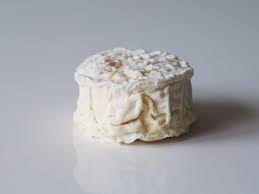
But La Tur is more than just a cheese; it’s an experience. Imagine spreading its sumptuous creaminess onto a rustic piece of bread, savoring its interplay of sweet and tangy notes, or letting its earthy undertones transport you to the pastures where it all began. Whether savored alone, paired with a glass of wine, or transformed into a luxurious sauce, La Tur promises a sensory adventure that beckons you to embrace the symphony of taste that only true culinary artistry can create.
Join us on a journey that celebrates not just a cheese, but the essence of Italian heritage, innovation, and flavor. Unveil the enigmatic world of La Tur cheese, where each bite is an ode to the symphony of flavors that echo through time, a reminder that sometimes the most exquisite experiences are crafted from the simplest, purest ingredients.
¿What Is La Tur Cheese?
La Tur cheese is a soft, creamy, and luscious Italian cheese that originates from the Piedmont region. It’s crafted from a blend of cow’s, sheep’s, and goat’s milk, resulting in a rich and complex flavor profile. La Tur is known for its delicate, bloomy rind and its interior texture that ranges from oozy to slightly dense, depending on its age.
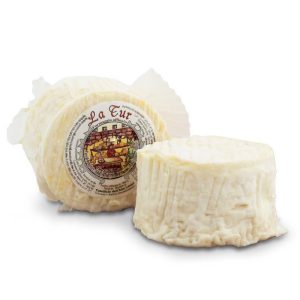
Characteristics
Here are some key characteristics of La Tur cheese:
- Milk Blend: La Tur is traditionally made by blending three types of milk: cow’s milk for creaminess, sheep’s milk for a touch of tanginess, and goat’s milk for a distinct, earthy flavor.
- Texture: When young, La Tur has a creamy, spreadable texture similar to a ripe Camembert or Brie. As it ages, the texture may become denser, with a center that remains semi-soft.
- Rind: The cheese is coated with a soft, white, edible rind, which develops a powdery bloom as it matures. This rind adds a subtle earthy flavor to the cheese.
- Flavor: La Tur cheese boasts a harmonious combination of flavors from the three milk sources. It can offer sweet, tangy, and slightly savory notes, with hints of grassiness and mushroom-like nuances.
- Uses: Due to its creamy texture and complex flavor, La Tur is often enjoyed spread on crusty bread, crackers, or paired with fresh fruit. It’s also suitable for melting, making it a great addition to pasta dishes or risottos.
- Artisanal Production: La Tur cheese is typically handcrafted by skilled cheesemakers, often using traditional methods and recipes. This artisanal approach contributes to its exceptional taste and texture.
La Tur cheese showcases the artistry of Italian cheese-making and the region’s dedication to preserving culinary traditions. It’s a versatile cheese that can be appreciated on its own or as a luxurious addition to various dishes. Its unique blend of milks and the balance of flavors and textures make it a delightful experience for cheese connoisseurs and food enthusiasts alike.
How Is Made
This dairy delicacy is more than just a sumptuous treat; it’s a testament to the skillful hands and generations of cheese-making tradition that give rise to its exquisite flavors and textures. Journey with us into the captivating world of La Tur’s creation, where the alchemy of milk, time, and expertise results in a symphony of taste.
1. Milk Selection: The journey of La Tur commences with the careful selection of three types of milk: cow’s, sheep’s, and goat’s. Each milk brings its own distinct character to the cheese, contributing to the layers of flavor that will later unfold on the palate.
2. Milk Blending: The milks are skillfully blended in precise proportions, creating a balanced symphony of taste. Cow’s milk lends creaminess, sheep’s milk adds a gentle tang, and goat’s milk introduces earthy undertones, harmonizing in perfect orchestration.
3. Coagulation: The milk blend is warmed and introduced to enzymes that initiate coagulation, forming the curd. The curd is then carefully cut and gently stirred to release whey, setting the stage for La Tur’s unique texture.
4. Molding and Draining: The curds are delicately ladled into molds, allowing excess whey to drain. This step influences the texture, ensuring La Tur’s interior ranges from oozy to slightly dense, depending on the desired outcome.
5. Salting: A sprinkling of salt on the curd’s surface not only seasons the cheese but also aids in moisture control and the development of its distinctive rind.
6. Ripening and Aging: La Tur’s transformation continues as it is transferred to ripening rooms. During this time, the cheese develops its bloomy, velvety rind, and its flavors continue to evolve. The duration of aging determines the final texture and depth of taste.
7. Rind Development: The cheese’s surface matures into an edible, white, powdery rind, adding an earthy complexity to the overall flavor profile.
8. Tasting the Symphony: Finally, the fruits of the cheesemaker’s labor are ready to be savored. The result is a cheese that encapsulates the lush terroir of Piedmont, the meticulous craftsmanship of its makers, and the delicate balance of flavors that dance in perfect harmony.
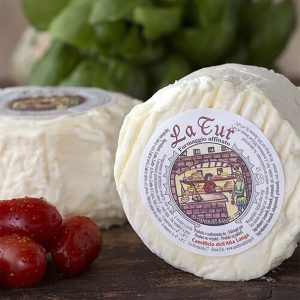
Origin
Ancient Origins and Regional Heritage
The story of La Tur cheese begins in Piedmont, a region renowned for its culinary excellence and fertile landscapes. Rooted in the traditions of rural Italian life, the cheese pays homage to the area’s long history of dairy farming, where cows, sheep, and goats grazed the lush pastures, providing the diverse milks that give La Tur its unique character.
Artisanal Craftsmanship
The art of making La Tur cheese is a tradition passed down through generations of skilled cheesemakers. The methods used to blend cow’s, sheep’s, and goat’s milk to create the harmonious blend of flavors are steeped in heritage. These artisans employ their deep understanding of the cheese-making process, using their senses and expertise to guide the transformation of milk into the creamy masterpiece that is La Tur.
A Reflection of the Land
The flavors of La Tur cheese are an expression of its terroir—the unique combination of soil, climate, and vegetation that imbues the milk with its distinct characteristics. The cows that graze on the region’s lush pastures, the sheep that roam its hills, and the goats that find sustenance in its fields all contribute to the intricate dance of flavors that unfolds in every bite.
Culinary Legacy
As you savor a piece of La Tur cheese, you’re not just experiencing a taste; you’re partaking in a legacy. This cheese has been cherished by generations of Italians who understood the importance of preserving their culinary heritage. The cheese embodies the stories of families gathering around tables, celebrations of local harvests, and the passing down of recipes that capture the essence of the region.
A Journey to Your Plate
From the pastures of Piedmont to your plate, La Tur cheese has traveled through time and tradition to offer you a glimpse into the heart of Italy. Its flavors echo the hills and valleys of its birthplace, its textures mirror the dedication of its makers, and its story resonates with the resilience of those who have nurtured its legacy.
So, the next time you indulge in a piece of La Tur cheese, remember that you’re not just savoring a delicious delicacy—you’re tasting a piece of history, a tribute to the land, and a celebration of the enduring spirit of Italian culinary artistry.
Substitutes
While La Tur cheese is a unique and flavorful dairy delight, there are several other cheeses that you can consider as substitutes, each offering distinct qualities that can complement various culinary creations. Here are a few substitutes (like Colby Jack) that you might find interesting:
- Brie or Camembert: Brie and Camembert cheeses share similar characteristics with La Tur, such as a creamy interior and a soft, edible rind. They offer a delicate, rich flavor that can be spread on bread, crackers, or used in warm dishes.
- Triple Cream Cheese: Triple cream cheeses, like Brillat-Savarin or Explorateur, are incredibly decadent and creamy, with a luxurious texture. They have a high fat content due to the addition of extra cream during the cheese-making process.
- Goat Cheese: If you’re drawn to the goat’s milk element in La Tur, you can explore different types of goat cheeses, such as Bucheron or Valençay. These cheeses range in texture from crumbly to creamy and can have tangy and earthy flavors.
- Mascarpone: Mascarpone is a smooth and creamy Italian cheese with a mild flavor. It’s often used in both sweet and savory dishes, making it a versatile substitute for La Tur in recipes that require a creamy texture.
- Cream Cheese: Cream cheese is a widely available option with a smooth and spreadable texture. While it might not have the same complex flavor profile as La Tur, it can work well in recipes that call for a creamy component.
- Ricotta Cheese: Ricotta is a fresh cheese that can provide a creamy texture in dishes like pasta, desserts, and spreads. While not as rich as La Tur, ricotta’s versatility makes it a suitable substitute in various culinary applications.
Remember that while these cheeses can offer similar textures or flavor profiles, they might not perfectly replicate the unique combination of cow’s, sheep’s, and goat’s milk found in La Tur. When substituting, consider the specific characteristics you’re looking for in a recipe and choose the cheese that best suits your needs and preferences.

Recipes that can be made with La Tur
Absolutely, La Tur cheese’s creamy texture and balanced flavors make it a versatile ingredient that can enhance both sweet and savory dishes. Here are a few recipes that showcase the delectable qualities of La Tur:
1. La Tur Cheese and Fig Crostini: A delightful appetizer that combines the creamy richness of La Tur with the sweetness of fresh figs.
Ingredients:
- Slices of baguette or crusty bread
- La Tur cheese
- Fresh figs, sliced
- Honey
- Fresh thyme leaves
- Olive oil
- Salt and pepper
Instructions:
- Preheat the oven to 350°F (175°C).
- Arrange the bread slices on a baking sheet and drizzle with olive oil. Toast in the oven until golden and crispy.
- Spread a generous amount of La Tur cheese on each toast.
- Top with sliced figs, a drizzle of honey, and a sprinkle of fresh thyme leaves.
- Season with a pinch of salt and a dash of freshly ground black pepper.
- Serve as an elegant appetizer.
2. La Tur and Mushroom Risotto:
The creaminess of La Tur adds a luxurious touch to this comforting mushroom risotto.
Ingredients:
- Arborio rice
- Vegetable or chicken broth
- Onion, finely chopped
- Mushrooms (such as cremini or shiitake), sliced
- La Tur cheese
- White wine
- Butter
- Fresh parsley, chopped
- Salt and pepper
Instructions:
- In a large skillet, melt butter over medium heat. Add the chopped onion and cook until translucent.
- Add the sliced mushrooms and cook until they release their moisture and become tender.
- Stir in the Arborio rice and cook for a minute until the rice is coated with the butter and onions.
- Pour in a splash of white wine and cook until it’s mostly absorbed.
- Begin adding the broth gradually, one ladle at a time, stirring frequently and allowing the liquid to be absorbed before adding more.
- Continue this process until the rice is cooked al dente and has a creamy consistency.
- Remove from heat and stir in the La Tur cheese until melted and incorporated.
- Season with salt and pepper to taste and garnish with chopped fresh parsley.
- Serve the risotto warm.
3. La Tur and Berry Parfait: A delightful dessert that pairs the creaminess of La Tur with the sweetness of berries.
Ingredients:
- La Tur cheese
- Fresh berries (strawberries, blueberries, raspberries, etc.)
- Honey or maple syrup
- Granola or crushed nuts (optional)
Instructions:
- In serving glasses or bowls, layer spoonfuls of La Tur cheese with a drizzle of honey or maple syrup.
- Add a layer of fresh berries on top of the cheese mixture.
- Repeat the layers until the glasses are filled.
- Optionally, sprinkle granola or crushed nuts on top for added texture.
- Chill in the refrigerator until ready to serve.
- Enjoy as a refreshing and indulgent dessert.
These recipes showcase just a few of the many ways you can enjoy the creamy, delectable qualities of La Tur cheese. Feel free to get creative and experiment with other ingredients to create dishes that celebrate this Italian cheese’s unique flavors.

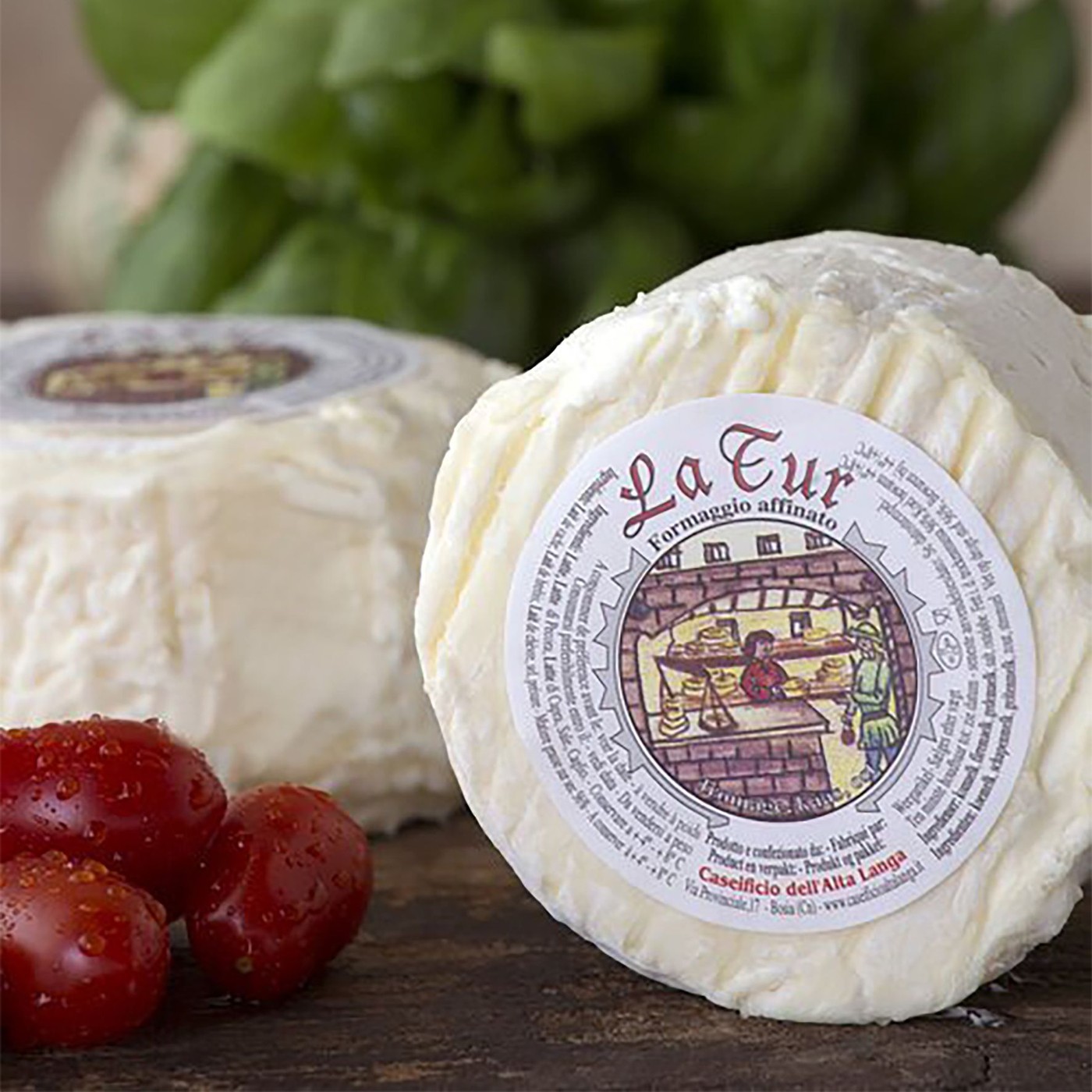

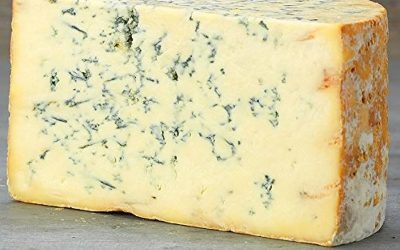
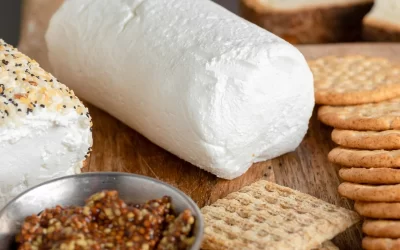

0 Comments